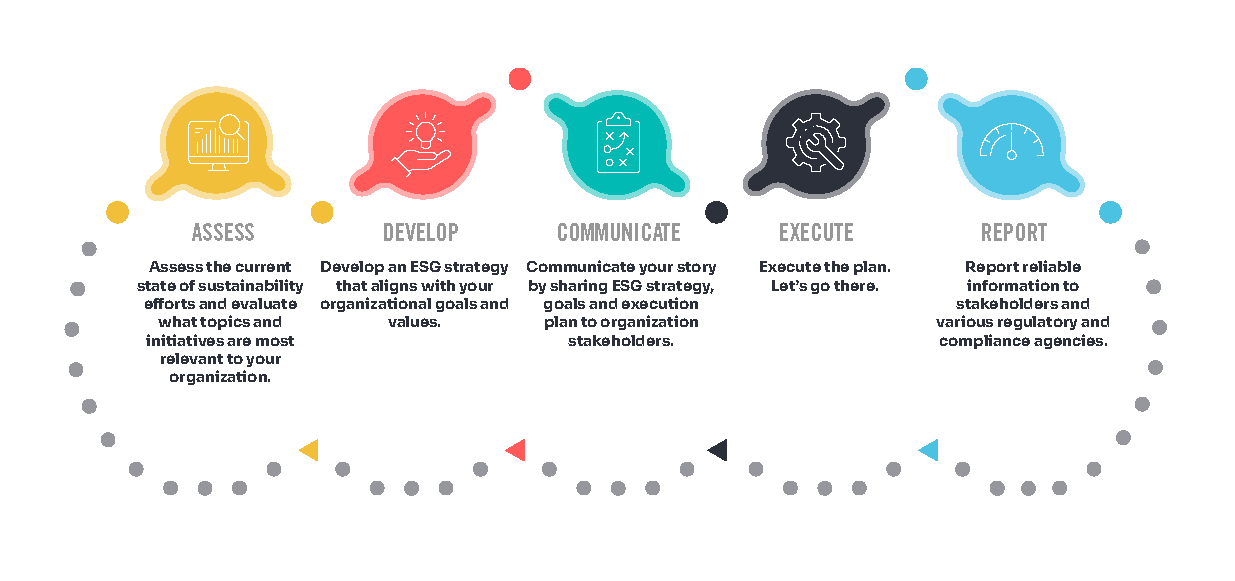
Article
ESG landscape in the financial services industry
On March 21, 2022, the SEC released a proposal for rules on climate-related disclosures stating that all publicly traded companies will be required to disclose greenhouse gas (GHG) emissions. They will also be asked to disclose a qualitative write up of climate-related risks, governance and risk management climate goals, and note to the financial statements quantifying the impact of climate related events and transition activities. While the rule directly applies to public companies, it may also apply to many private companies that are in the supply chains of larger public companies.
Financial institutions should be on high alert because banking regulatory bodies will likely also enact mandates for environmental sustainability. Not long after the SEC proposed rule was released, the FDIC requested comment on a statement of principles for climate-related risk management for large financial institutions. Some organizations aren’t waiting for a regulatory mandate and have chosen to enact ESG policies and take action against climate change. Many have found that because of their new policies, they have attracted and retained customers.
Getting started with an ESG strategy in the banking space
For banks that are considering an ESG policy, it may be difficult to find a starting point. Measuring environmental impacts can be vague, and sustainability cannot be addressed by a few paragraphs in an annual report. Consider taking the following steps:
- Select customers/borrowers that score highly on ESG factors and accumulate their emissions and sustainability efforts.
- Take on an active role in managing ESG impacts by discussing issues with commercial clients in order to improve their performance.
- Begin collecting ESG data from clients (for example, include questionnaires in your loan origination process).
- Track and assess the ESG impact of loans, investments, debt and other products, and refinance your own debt or customer assets in order to meet certain ESG criteria.
- Establish new policies for investments that factor in ESG concerns.
- Address environmental and social issues through financial products and investments, including pricing and rate discounts.
- Improve tax strategy by investing in ESG related tax credits.
- Offer green, social and sustainability linked bond issuances, seek second party opinions on bond frameworks from rating agencies and ensure ESG practices are disclosed in annual bond reporting.
Organizations may also choose to develop strategies – such as refusing to renew loans for customers/borrowers whose actions have a negative impact on the environment – in order to reduce exposure to entities that do not meet certain ESG criteria.
Five steps to building a sustainable organization:
Developing a strategy and response to ESG involves multiple parties across an organization, and both the board and management must be aligned on each of their specific roles.
- Assess the current state of sustainability efforts and evaluate what topics and initiatives are most relevant to your organization.
- Develop an ESG strategy that aligns with your organizational goals and values.
- Communicate your story by sharing the ESG strategy, goals and execution plan with organization stakeholders.
- Execute the plan.
- Report reliable information to stakeholders and various regulatory and compliance agencies.

Benefits to a materiality assessment
Organizations may also consider using a materiality assessment – a method to identify and prioritize which ESG initiatives have the most impact and influence on stakeholders. The results can serve as a guide to determine what an organization should focus and/or report on for ESG. Utilizing this method increases the chances of better meeting stakeholder requests and demands, identifies topics to measure and improve, and analyzes business risks and opportunities.
ESG rating agencies
Once an ESG strategy is in place, rating agencies such as S&P and Bloomberg may examine an organization’s ESG practices and risk exposure to determine its long-term sustainability. Scores from this examination are used by investors and other stakeholders when making important decisions concerning an organization’s future. Though there is currently no specific standard or industry guideline for measuring ESG ratings, and no formal governance code currently exists in the U.S., the SEC is narrowing in on formal rules, especially for environmental disclosures.
Don’t get caught off guard. It’s never too early for banks to begin to develop their ESG strategy – get ahead of the game with critical advice from our ESG advisors.


